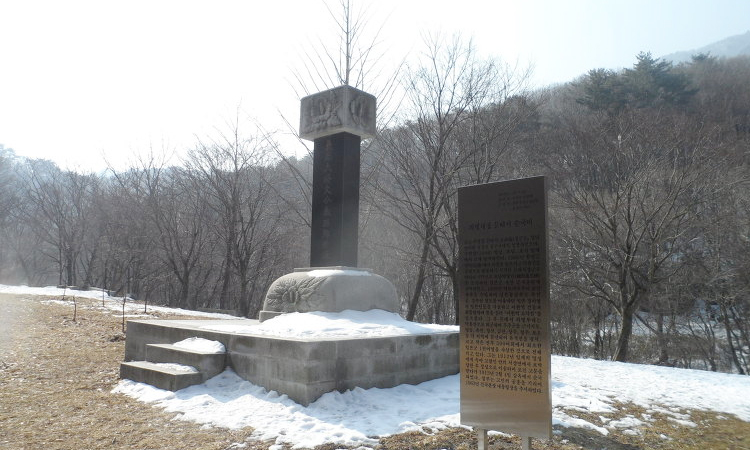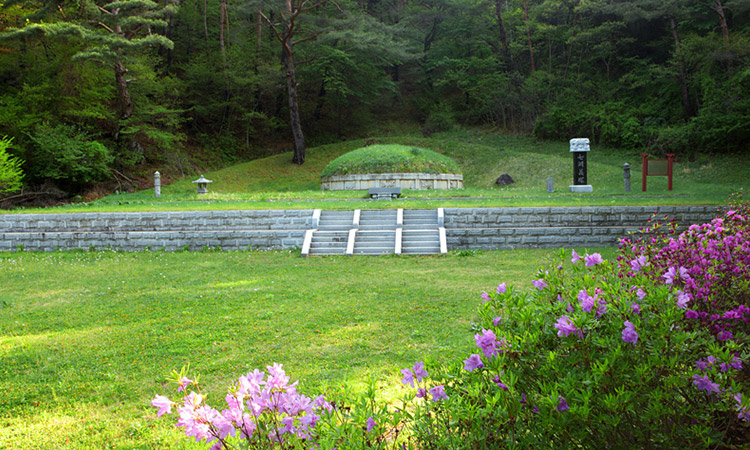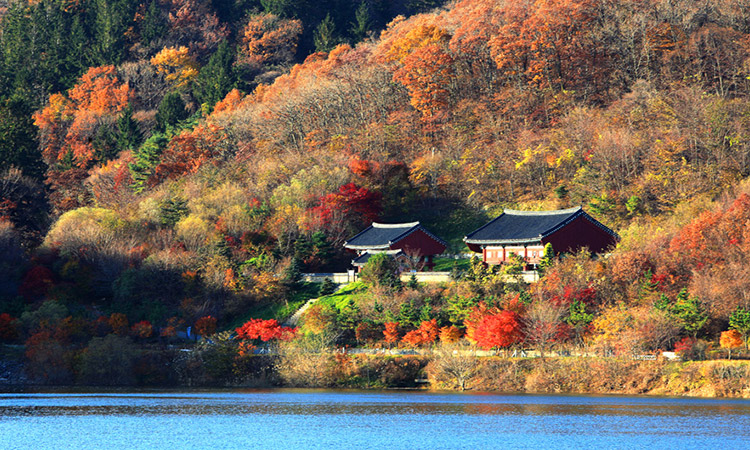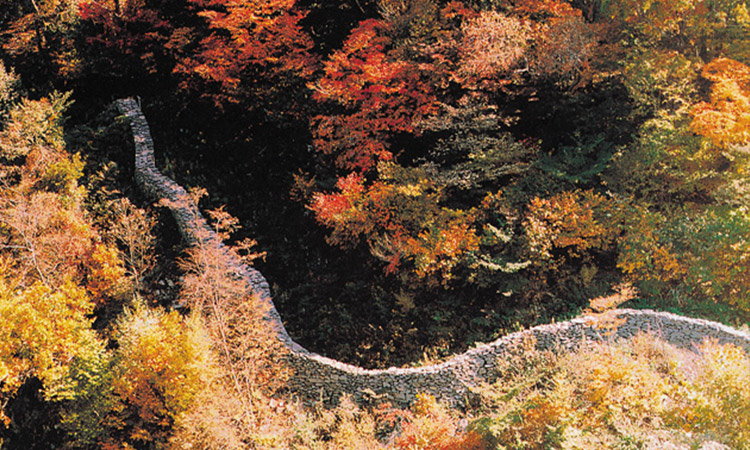Historical Monuments
MUJU COUNTY
Pure Muju
Muju as a Tourist Attraction
Muju in the History
Muju under the Four Seasons
Introduction to Muju
How to Find Us
Tourist Information Center
Major Tourist Attraction
33 Scenic Spots in Gucheon-dong
Noted Mountains in Muju
Valleys in Muju
Noted Amusement Parks
- Muju Deogyusan Resort
- Bandi Land
- Taekwondo Park
- Gucheondong Tourism Complex
- Deokyudae Comprehensive Camping Ground
- Bunam Riversides Amusement Park
- Muju Hydro-Pover Generation Plant
Cultural Heritage Sites
Confucian Academies/Buddhism Temples
Natural Monuments
Leisure/Sports
Muju Resort
Mountaineering
Tasty Foods in Muju
- Fish Gruel
- A Korean Table D'horte, 'Sanche Bibimbap'
- Sanchae Jeongsik
- Freshwater Fish Red-pepper Pot
- Oak Mushroom & Rice Soup
Festivals/Cultures
Firefly Festival
Education Center of Traditional Culture
Banditbul
Historical Monuments
Historical Monuments
A hard-fought field against Japanese Invasion, Gucheondong

It was a hard-fought field that a general, Mun Tae-seo, who left his glorious records on fighting against Japanese invasion to save the country as the general of homeland reserve corps in late Korean Empire, won a great victory at a war through a hard fighting against the military police corps of Japan in February 1908. There is a tombstone admiring his death for country near Inwoldam, Gucheondong, which was a hard-fought field at that time.
| Location | Beside of Gucheondong Water Purification Plant, (Deokyu Village), Samgong-ri, Seolcheon-myeon, Muju-gun |
|---|
Chilyeon Uichong

When 'Jeongmi-Chil-Joyak' (a treaty on seven provisions in Jeongmi Year) was signed by the oppression of Japanese government in 1907 leading to the disorganization of the old Korean Army, a military officer from the Royal Guardian Corps, Shin Myeong-sun, became a leader of volunteer troops by himself and recruited 150 volunteer solders.
And after having established the military headquarters in Deokyu Mountain, he made numerous military achievements by winning many victories at wars against Japanese troops in various war fields, such as Muju, Jinan and Jangsu, etc. However, regretably, he was killed in a battle together with all of his soldiers in April 1908 while having fought gallantly against Japanese troops without any prior preparation due to a sudden attack of Japanese troops, which hid themselves in a valley, on both sides while the Korean soldiers were marching to attack the Japanese Corps of Guards which was stationed in Anseong. And then, he was buried here.
| Location | (Chilyeon Valley) Tongan Village, Gongjeong-ri, Anseong-myeon, Muju-gun |
|---|---|
| Transport |
|
Site of Jeoksangsan Sago

After all of the nationwide Sago (Historical archives) including 'Chunchukwan' in Seoul were burnt to the ground during the Japanese Invasion of Korea in 1592, the 25th year of King, Seonjo, new historical archives were built in many places, such as Mt. Jeongjok, Mt. Taebaek, Mt. Myohyang and Mt. Odae, etc.
THowever, since the northern border of the dynasty was in danger of wars at that time, the sillok (annals of the Dynasty), which had been stored in Mt. Myohyang, were moved into Mt.Jeoksang renowned for its naturally advantageous fortress after having built a 'Shillokjeon' in the 6th year of King, Gwanghae, (1614). And in the 19th year of King, Injo, (1641), Seonwongak was built to keep the genealogy of royal family, 'Seonwonrok'. And it was one of the five most important Sago, which all the important historical documents had been stored for around 300 years, in Korea until the Sago system was demolished by the Japanese government in 1910.
| Location | (Besides of Sanjeong Lake in Mt. Jeoksang), Bukchang-ri, Jeoksang-myeon, Muju-gun |
|---|---|
| Transport | Muju-eup ⇒ Sanjeong Lake <Jeoksang Lake>(15.0kms), It takes around 20 min. by car. |
Jeoksang Mountain Fortress

In late Goryeo Dynasty, the 23rd year of King, Gongmin, (1374), the Three Provincial Governor, so called 'Samdo Tongdosa', General, Choi Young, was passing by this place while having come back to Seoul after having had subjugated Jeju Island and got to be admired at the steepness with which could play a role as a natural strong fortress since it was surrounded with steeply risen rock cliffs as if they were faced by a stone mason.
Therefore, he suggested the king to build a mountain fortress here for the preparation of the future risks of a war. After that, having entered the Chosun Dynasty, a fortress was built here and Sago (a historical archives) was established to keep the historical documents. That's why it is a historical site with its long history.
| Location | around Mt. Jeoksang, Jeoksang-myeon, Muju-gun |
|---|---|
| Transport | Muju-eup ⇒ the Summit of Mt. Jeoksang (15.0kms), It takes around 20min. by car. |
| Hiking Course |
|






